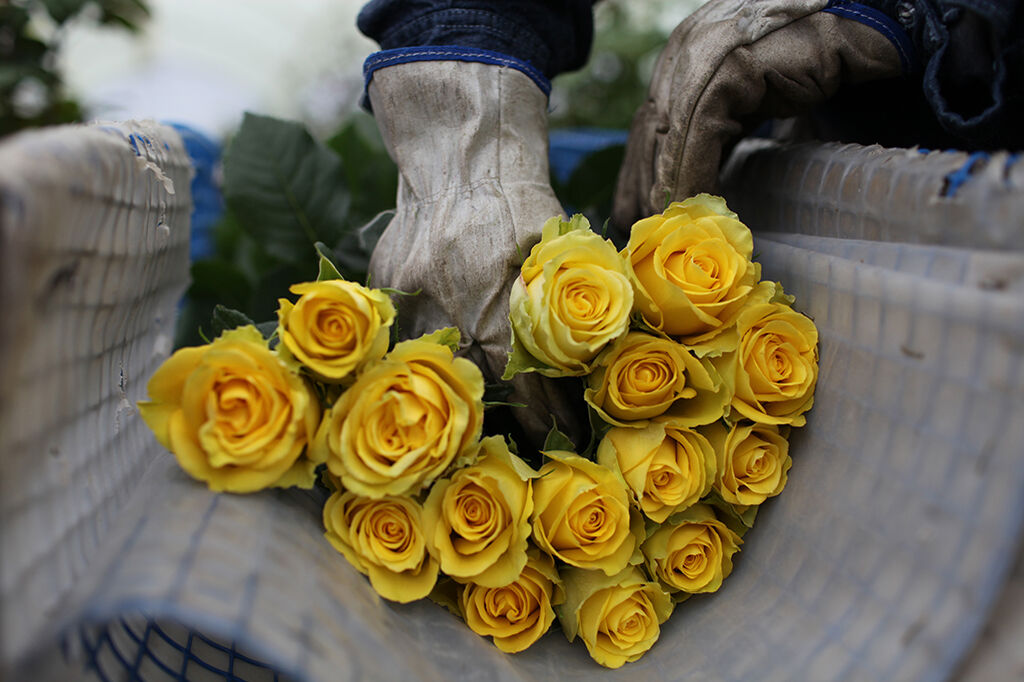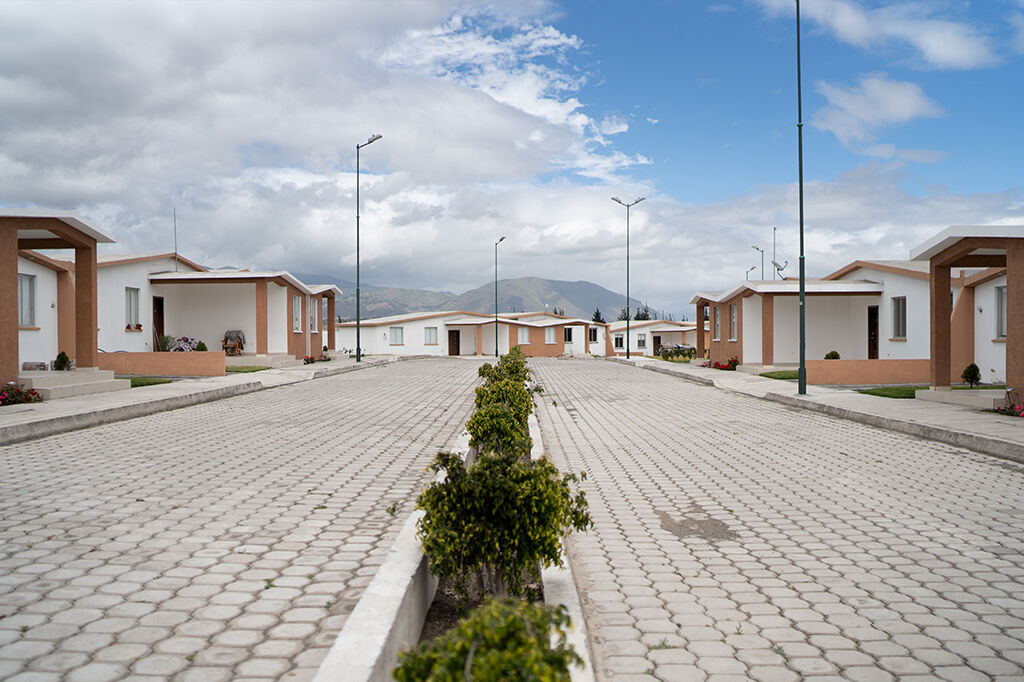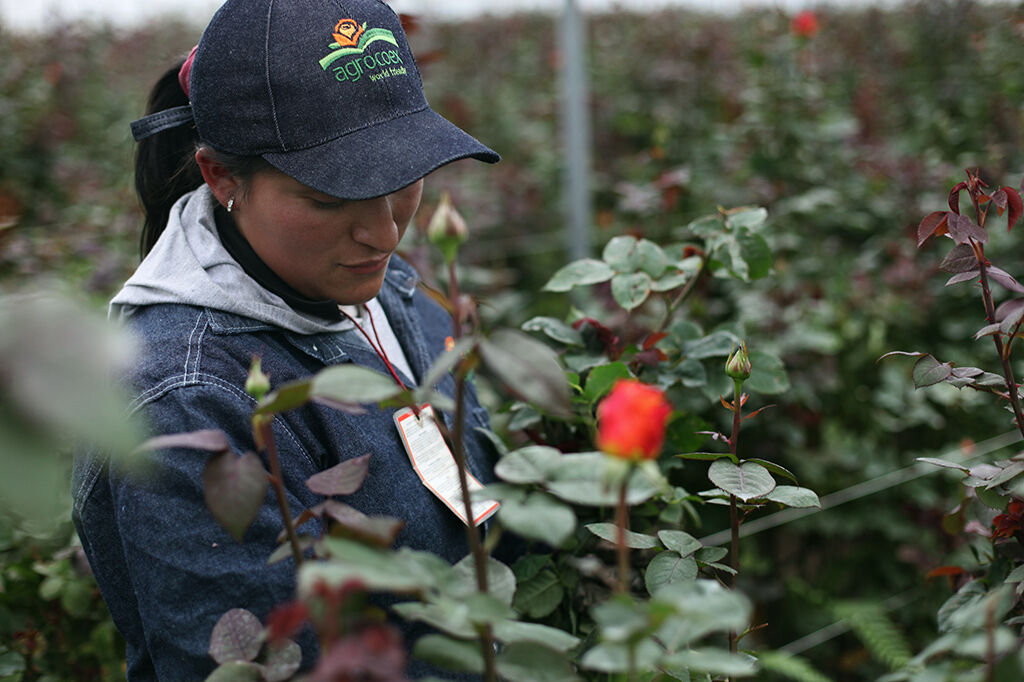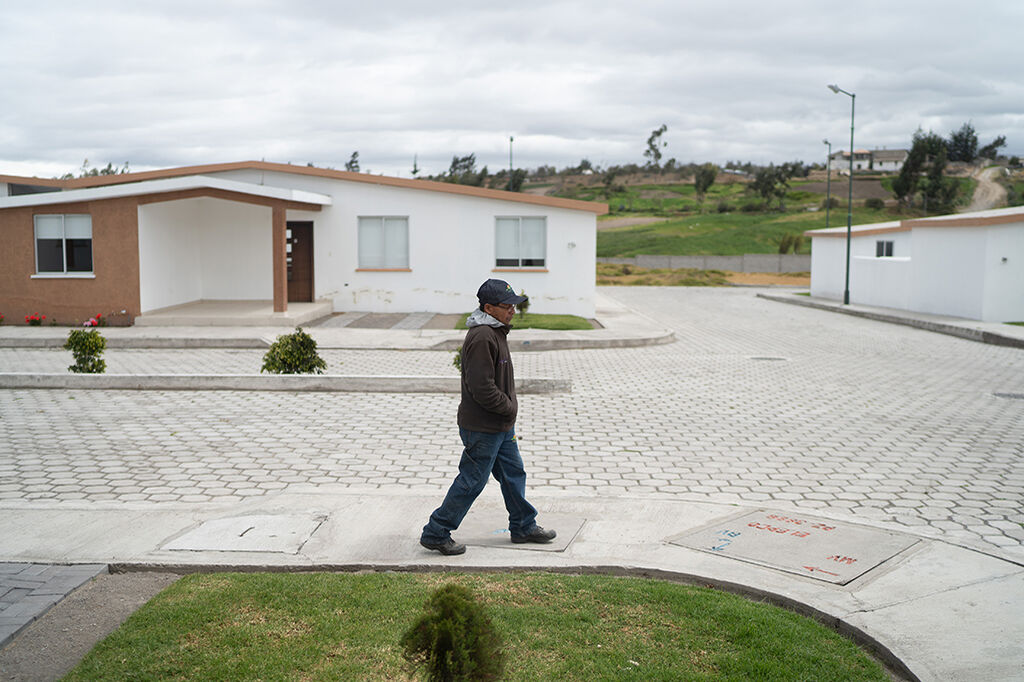Ten years ago, Rendon Vival Felix Belisario lived in Napo, Ecuador, a province located amid the Amazon Rainforest. Work was nearly impossible to find—industrial development is rare in Napo, so he worked for minimal pay as a tour guide for a local hostel. But low pay meant that Belisario had trouble supporting his family.
Belisario left home in search of a better job, potentially a better life. Soon, he found work in the fields of Agrocoex S.A., a Fair Trade Certified™ floral farm in Latacunga, Ecuador. Work was consistent and paid well, but his family couldn’t fit into the room he rented near the farm. They stayed home in Napo, as Belisario lived five hours away. Belisario often sent his family money and visited them every three months, helping them live better, but the distance between them made him feel sad and lonely.
But Belisario also felt hope: The Fair Trade Committee at Agrocoex had been discussing investing money from its Fair Trade Community Development Fund into a new housing complex for workers.
The Fair Trade Committee, which consists entirely of workers who are democratically elected to represent their peers, surveyed the rest of the workforce and found that housing was a common need, as many lived in cramped spaces or, like Belisario, far from their families. The money in the Community Development Fund is made from a portion of the sales of Fair Trade Certified products, and one of the functions of the Fair Trade Committee is to vote on how to invest the money on social, economic, and environmental projects.
The housing would be perfect, Belisario thought—he’d own a home and finally be reunited with his wife, their daughter, and granddaughter. He’d dream of their happy home, all together again, as he trimmed and harvested flowers in Agrocoex’s fields.
The committee voted, and Belisario’s dream became reality: The La Calerita Housing Complex, 100 houses for Agrocoex workers, would be built in the La Calera neighborhood of Latacunga.
“We believe that housing is a basic need for every person,” said Pruna Pastuña Loide Matilde, the committee president and a post-harvest supervisor.

Belisario’s dream is something all workers deserve—good housing, decent working conditions, and freedom from poverty.
The La Calerita Housing Complex is part of a global movement to end poverty. In 2015, the United Nations announced 17 Sustainable Development Goals (SDG) to end poverty, protect the planet, and ensure all people can enjoy peace and prosperity by 2030.
The first goal: End poverty in all its forms everywhere.
This goal is on display at Agrocoex, as workers at Agrocoex were able to purchase the houses for the price of the parts and production of the home. Low-interest loans were offered to workers, made possible by the Fair Trade Community Development Fund. Before construction, some workers had to obtain high-interest bank loans to live near work, Matilde said—the spaces were often devoid of services like water, sewage, and electricity. La Calerita represented an opportunity for workers to move economically upward by investing in a home rather than paying rent for cramped rooms, far from their families.
This same goal runs across all fair trade factories, farms, and fisheries. Money from fair trade certification alone can’t end poverty, but it can help many workers hit hardest by market volatility and tough working conditions. Fair trade farmers and workers have earned an additional $465 million through Community Development Funds since 1998—in 2019 alone, they earned $66.8 million.
Outside of fair trade, workers don’t often see this kind of return on their work. More common is substandard housing and low wages—two-thirds of the world makes the equivalent of $10 or less per day. About 10 percent make $1.90 or less per day. This is the kind of poverty we hope to diminish in the next decade.
To help end poverty, fair trade will contribute to two SDG targets by 2030:
- Reduce the number of people living in poverty by half.
- Build the resilience of people in poverty and others in vulnerable situations, reducing their exposure to disaster and volatility of all kinds—social, economic, climate-based.
For the first target, fair trade standards require that employers respect labor rights. They also mandate that workers have decent working conditions, job security, and equal pay for equal work. In plantations and factories, employers must have a policy that addresses sexual harassment. For some fair trade products, like coffee and cacao, producers should earn at least the Fair Trade Minimum Price—this is a fair trade mechanism that serves to protect producers from volatile market fluctuations, a safety net to catch workers when market prices drop.
For the second target, fair trade prohibits slavery, forced labor, and bonded labor on Fair Trade Certified farms and factories. Fair trade also upholds standards to protect natural resources, including water and soil, and guarantees workers the prevailing legal minimum wage and accident insurance.
While we as a planet work together toward these goals, contributions from Fair Trade USA® are improving the working and living conditions of farmers and workers across the world. They are lofty goals, but they can be reached—one community at a time, one purchase at a time.
La Calerita houses didn’t appear overnight—the complex started with a land purchase in 2010, then led to years of construction and delays. When delays struck, Belisario and other workers felt their initial excitement turning into uncertainty.
Some delays couldn’t be helped—in 2015, for example, construction was delayed due to the eruption of the Cotopaxi volcano, located 15 miles from Latacunga. But slowly, roads, water treatment plants, as well as drainage and rainwater systems, were constructed, the frames of houses built atop. La Calerita began looking like a new community.
Then, La Calerita Housing Complex—the dream of Belisario and Agrocoex workers—became real. In 2017, the first 24 homes were built, the next 39 were completed in 2020, and the final 37 homes will be completed in 2022.
In 2018, Belisario was able to put money down on a house and send for his family. This made it easier for him to save money, he said. More importantly, it allowed him to reunite with his family under one roof, just as he had dreamed.
“It was the best thing that’s happened to us,” Belisario said. “This changed my life. Now, I am happy living as a family with my loved ones.”

While we’re still watching the results at Agrocoex, Fair Trade USA has seen success in reducing poverty across similar industries.
Cocoa farmers surveyed across 10 different fair trade cooperatives in Côte D’Ivoire reported that their ability to afford food rose from 82 percent in 2015 to 93 percent in 2019. Fair trade cocoa farmers also exceed the national average water-access rate for rural populations by 26 percentage points.
Because of the Fair Trade Minimum Price, fair trade farmers and workers have received an additional $260 million since 1998, with $63.6 million coming in 2019. If similar safety nets were available to more workers around the world, many would be closer to being freed from poverty. A cocoa farmer from a Côte D’Ivoire cooperative, for example, said that he paid for his children’s education and health expenses with the money he received. Health and education, which should be available to all human beings, tend to be lost in poverty.
These statistics, and projects like the new housing complex at Agrocoex, are promising. But all must continue improving and evolving before the Sustainable Development Goals are met—this is why buying fair trade products like flowers grown at Agrocoex or chocolate sourced from Côte D’Ivoire can matter so greatly.


“Home is having all my loved ones by my side, living in harmony and tranquility, enjoying the beautiful things in life.”
Construction of La Calerita Housing Complex hasn’t ended with houses and infrastructure. Canteens and neighborhood shops have also been built, as have access roads to the city, where workers can receive medical care. Services like garbage collection have started. All add to the secondary goal of the Agrocoex complex—better community—but also diminish the conditions of poverty.
There are now plans for another Agrocoex complex, this one for workers at its floral farm in Machachi, Ecuador. That farm’s Fair Trade Committee acquired land in 2019 in the hopes of building a similar housing complex and making similar dreams come true.
Belisario, living in a home with his family, spends what was formerly his rent money on his new home. He looks back on the years of sacrifice and hard work, living far from his family, and feels happy to have a place to call home.
“Thanks to my work, I have my family by my side,” Belisario said. “Home is having all my loved ones by my side, living in harmony and tranquility, enjoying the beautiful things in life.”
Hal Conick is a writer based in Chicago.